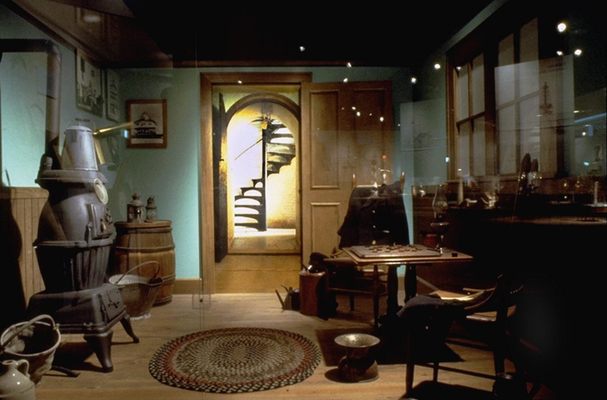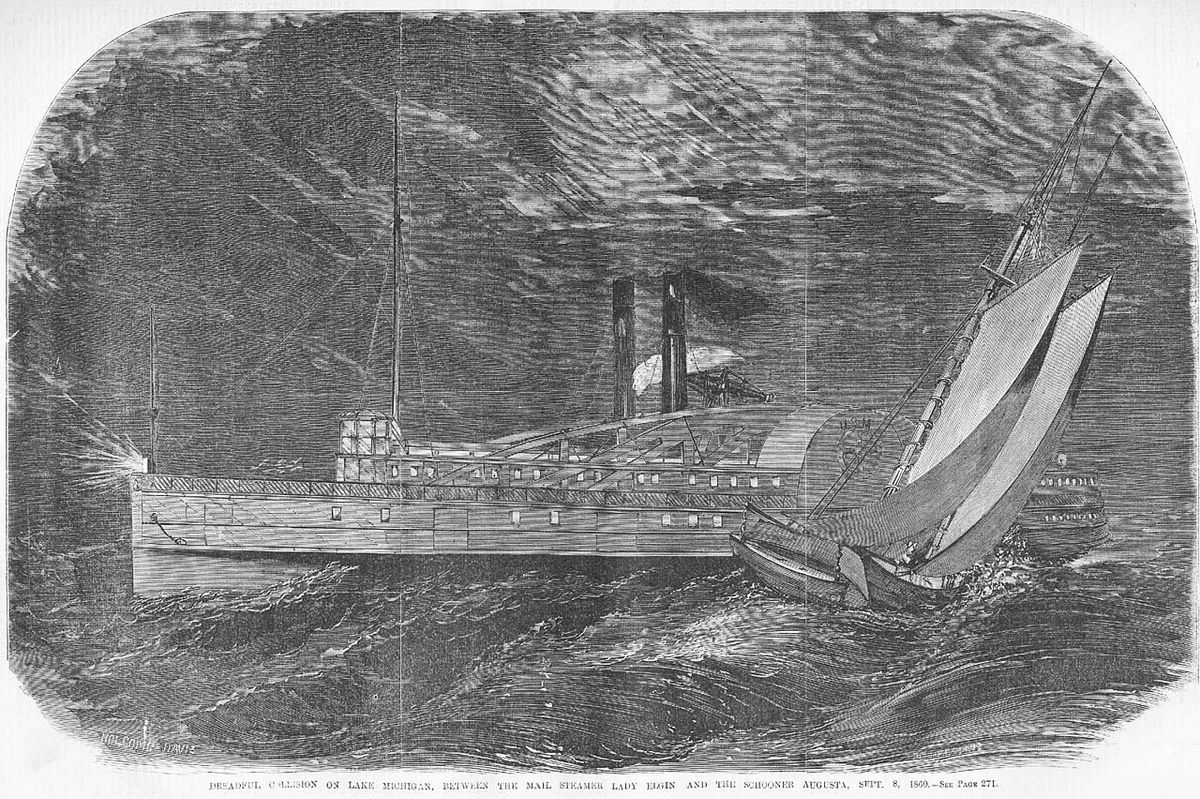About
Following a series of shipwrecks off Evanston, Illinois, including one of the greatest maritime disasters on the Great Lakes, the wreck of the steamer Lady Elgin, local residents petitioned Congress for a lighthouse. Their requests were granted, but then the Civil War put everything on hold. Finally, in 1874, the light went on in Grosse Point Lighthouse.
By the mid-1800s, the industrial revolution was well underway in the United States. Chicago was particularly booming, and maritime traffic was increasing by the month. So too, however, was the smoke emanating from the newly constructed factories, at times becoming so thick it could block out the glow of the area’s lighthouses. Add to this some dangerous shoals off Grosse Point, and navigators on the lake were increasingly at risk.
A series of vessels were either sunk or stranded along these shoals, culminating in the worst maritime disaster on the Great Lakes. In the early morning hours of September 8, 1860, the passenger steamer Lady Elgin was northbound from Chicago carrying Irish Union Guards returning to Milwaukee. Just off Grosse Point, a lumber-carrying schooner called the Augusta rammed into the Lady Elgin. In just 20 minutes, the steamship had split apart and sunk. The passenger manifest was destroyed in the collision, but some 300 passengers lost their lives that day, in what remains the greatest loss of life on open water in the history of the Great Lakes.
More shipwrecks occurred off Grosse Point during the next 10 years, with residents of Evanston petitioning Congress for a much-needed light station. But the Civil War (1861-1865) delayed any concrete plans, until in 1871 Congress finally approved $35,000 for a lighthouse on Grosse Point on the shore of Lake Michigan.
Construction began in 1872 under the watchful eye of Orlando Metcalf Poe, a U.S. Army officer and engineer who supervised the building of many early lighthouses on the Great Lakes. The main building, designed in the Italianate style of architecture, was completed in June 1873, along with the 113-foot-tall brick tower. The lighthouse was finally lit in March 1874, its second-order Fresnel lens becoming the largest type of optic used on the Great Lakes.
The Grosse Point Lighthouse was automated in 1934, and remained operational until 1941, at which time it was extinguished under the National Air Raid Protection Plan of World War II. The light station was then turned over to the City of Evanston in 1945 and became the responsibility of the Lighthouse Park District. It was relit a year later as a private aid to navigation and was added to the National Register of Historic Places in 1976. It was designated a National Historic Landmark in 1999 and remains operational under the supervision of the Lighthouse Park District.
Related Tags
Know Before You Go
Grosse Point Lighthouse is located about 13 miles north of Chicago. Tours of the lighthouse are held seasonally due to weather conditions, and the District conducts regularly scheduled tours from June through September on Saturdays and Sundays excluding Labor Day weekend and the week of July 4. Entrance is $6 for adults and $4 for children aged 8 to 12. The grounds are open to the public free of charge year-round. For additional information phone 847-328-6961.
Community Contributors
Added By
Published
July 6, 2018

















































